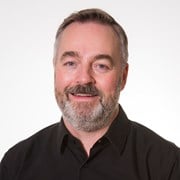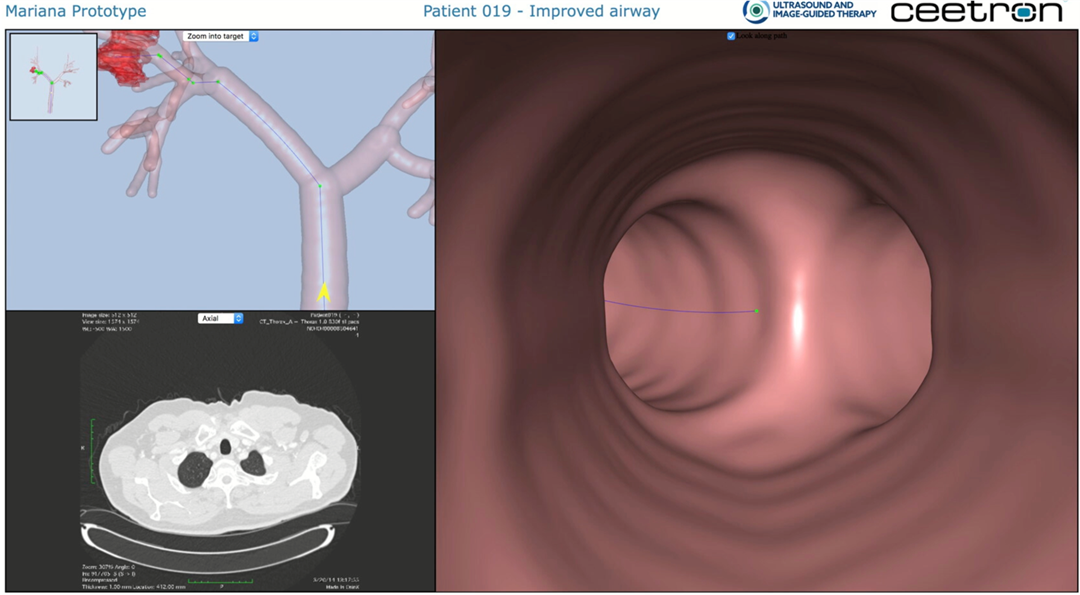The MARIANA project aims to create the most advanced image-guided flexible catheter platform on the market with immediate application to diagnosis and treatment of lung cancer. The main result of the project will be more accurate, more effective and less expensive management of early stage lung cancer. Increased accuracy will be achieved through significant progress beyond the current state of the art in image-guidance and tracking technology. The working channel of our tracked catheter will facilitate deployment of the most advanced diagnostic imaging technology in the airways such as endobronchial ultrasound and emerging imaging modalities such as optical coherence tomography.
While currently available technology does not enable real-time diagnosis and therapy, advanced imaging when used in conjunction with instrument tracking has been shown to improve diagnostic outcomes. Our catheter channel will enable immediate endoluminal probe therapy in future projects/solutions using high-impact developmental technologies such as photodynamic therapy, cryotherapy and electrochemotherapy without the need for a separate procedure. The image-guidance platform will reduce biopsy costs by enabling endoluminal approaches to nodules which now may be subject to surgical biopsy. Electromagnetic navigation is facilitated with machine-learned predictive software mapping of lumens in the outer airways using the CustusX platform technology at SINTEF. Based on novel lumen extraction algorithms and registration techniques, we will develop and produce a cloud-based software tool for planning and guiding bronchoscopy procedures. We envisage significant navigation capabilities beyond the current commercial standard of 6-8 airway branches with endoluminal navigation in up to 12 airway branches in the MARIANA platform.

